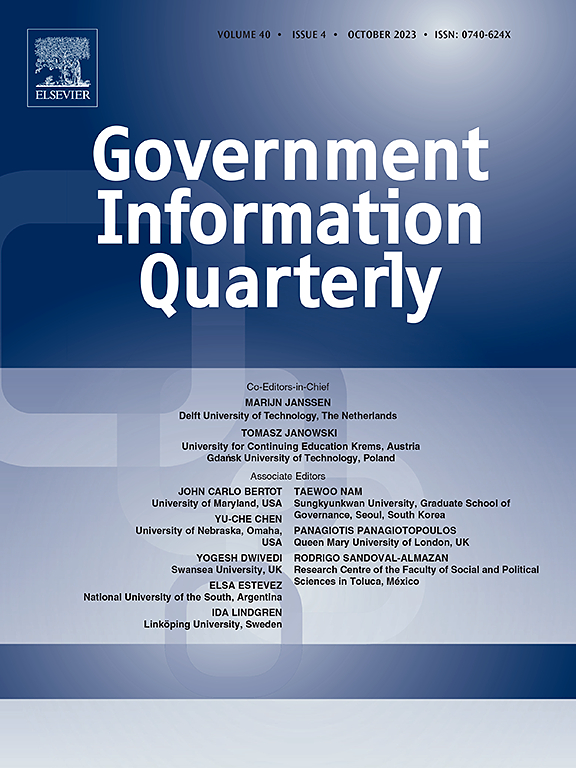Governing collective ambidexterity: Antecedents, mechanisms, and outcomes in digital service ecosystems
IF 7.8
1区 管理学
Q1 INFORMATION SCIENCE & LIBRARY SCIENCE
引用次数: 0
Abstract
Digitalization drives societal transformation to reform existing practices in the evolving environment. Central to this transformation is the creation of interoperable digital public services across diverse organizations, increasingly guided by human-centric principles and life-event orientation. This paper explores the complex process of achieving digital service innovation, emphasizing the need for inter-organizational balancing between radical transformation and efficiency through collective ambidexterity, where multiple ecosystem actors coordinate to balance innovation and efficiency simultaneously. While previous research predominantly studied ambidexterity at the organizational level, focusing on its antecedents, mechanisms, and outcomes, our study extends this inquiry to the broader ecosystem. Via a single-case study, we investigate how collective ambidexterity can be governed in a large-scale digital service ecosystem. To address the research question, we developed a multi-level conceptual model of governing mechanisms, antecedents, and outcomes of collective ambidexterity across three analytical levels: the ecosystem, organization group, and organization. Our theoretical contribution is twofold. First, we enhance conceptual clarity on collective ambidexterity and show how Modes of Collaboration (MoC) can facilitate innovation and efficiency of human-centric digital services throughout the three levels of governance. Second, the resulting governance model emphasizes the need to connect centralized, decentralized, and group-level governance strategies for developing digital services—to achieve and govern collective ambidexterity in the development of digital services in the public sector.
求助全文
约1分钟内获得全文
求助全文
来源期刊

Government Information Quarterly
INFORMATION SCIENCE & LIBRARY SCIENCE-
CiteScore
15.70
自引率
16.70%
发文量
106
期刊介绍:
Government Information Quarterly (GIQ) delves into the convergence of policy, information technology, government, and the public. It explores the impact of policies on government information flows, the role of technology in innovative government services, and the dynamic between citizens and governing bodies in the digital age. GIQ serves as a premier journal, disseminating high-quality research and insights that bridge the realms of policy, information technology, government, and public engagement.
 求助内容:
求助内容: 应助结果提醒方式:
应助结果提醒方式:


